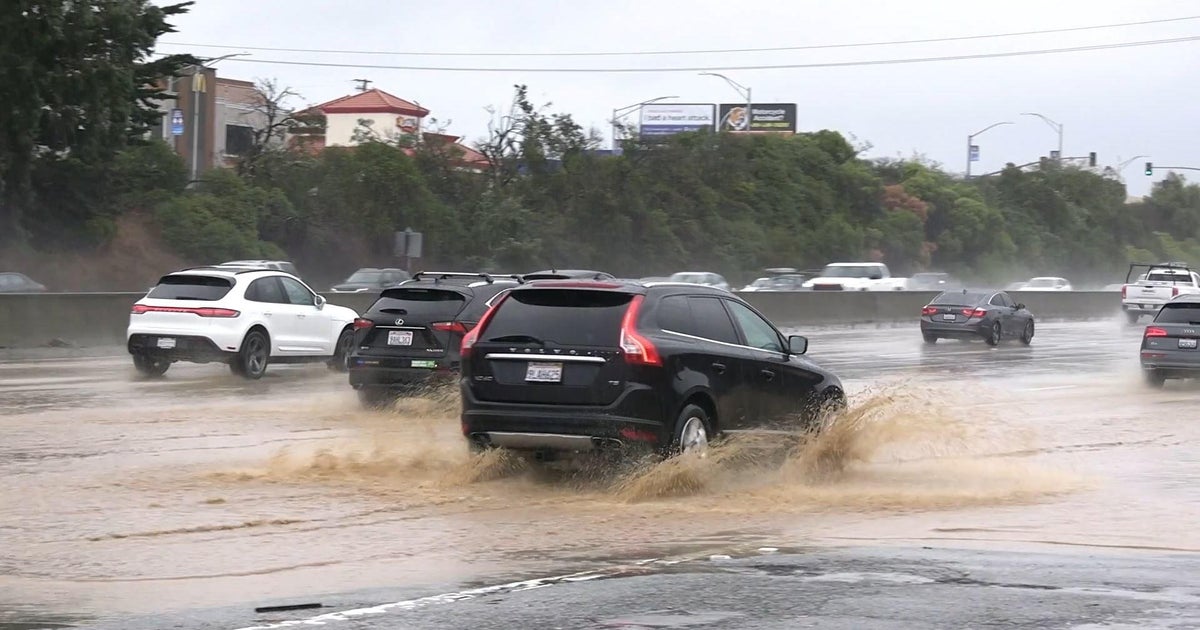High-Speed Rail Begins to Take Shape In Central Valley
FRESNO (KPIX 5) -- To say that California has been talking about high-speed rail for a long time would be an understatement. For decades, those conversations have been accompanied by slick animations of what those trains might look like, zipping across the state at 220 miles an hour. Now, in the spring of 2016, something concrete is actually taking shape in California's Central Valley.
"What I would say is, you gotta start somewhere, and the Central Valley is a good place to start," said Terry Ogle, director of design and construction for the California High-Speed Rail Authority.
Ogle stood in a dusty construction site on the edge of downtown Fresno where the demolition and rebuilding of several downtown overpasses and underpasses was underway to make way for high-speed rail lines.
The site is one miniscule piece of a monumental endeavor that is already the largest active public infrastructure project in the United States.
About four miles away, Highway 99 is getting moved 100 feet to the West to make room for future tracks. Some 35 miles to the north and just east of Madera, there's something that really does look like the makings of a train system.
"It's kind of looking like cool infrastructure going on out there, you've got the columns coming up, piles in the ground, and now you're building this guideway that the train will run over," said Ogle, as he the Fresno River Viaduct construction, now taking shape alongside the existing freight rail line.
There are now about six active work sites along the first piece of the high-speed rail system as it's currently designed. They are the first in a long line of so-called "construction packages" that will eventually be stitched together between San Francisco and Los Angeles. By the end of this year, it will all add up to some 120 miles of construction.
Still, no matter how much the state digs in, the opposition isn't going away. "I guess it's what you might call a slow-motion train wreck. The only question at this point is how far do they go before they stop," said attorney Stuart Flashman, who went to court to stop high-speed rail.
Flashman, however, is hardly an anti-tax, anti-infrastructure guy. In fact, he's a Bernie Sanders supporter who believes in big public projects. "I am. I am, [but] if you're going to build infrastructure, it's gotta do something useful, not just building holes in the desert," he said, referencing the work underway in several sparsely populated areas of the Central Valley.
Flashman thinks design and funding questions will overwhelm the project long before it's ever really finished, warning that "This is a project that is going to fail, and when it fails everybody in California is going to be turned off to high-speed rail, saying 'oh, we tried that, it was a disaster.'"
Ogle's response was the valley's remote expanses are precisely the place to start and test the system. The long flat stretches between Bakersfield and Merced certainly fit that description. Much more difficult problems lie ahead, such as engineering a passage through the San Gabriel Mountains. The valley, simply put, is the easy work.
Ogle knows the project has plenty of skeptics and unanswered questions, but he's also convinced the state is on the right track. "If you look at what's happening, over the next couple years people are going to stand back and say 'wow,'" said Ogle, referring to the construction set to unfold.
20 years after the establishment of the California High-Speed Rail Authority, the plan finally exists as more than an idea. There is actually something Californians can point to, even touch. Without any problems, this first phase of the system is currently set to open in 2029, with a price tag of $64 billion dollars. Consider this the end of the beginning.



